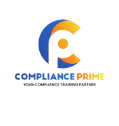In business, time is a valuable resource, and every process involves both time and cost. Hiring a new employee is no exception. The longer a position remains vacant and the more time spent filling it, the greater the expense for the company.
Once the hiring process is successfully completed, the work doesn’t end there. The next crucial step is the onboarding process, where you need to introduce the new hire to their role, the company culture, and their specific duties and responsibilities. This phase is essential for ensuring that the new employee is well-informed, integrated into the team, and set up for success in their new position.
Both hiring and onboarding take a lot of time, with the onboarding process generally taking longer. Therefore, minimizing the time required for both hiring and onboarding is crucial for operational efficiency and cost-effectiveness.
In this blog, we will explore the typical duration of the onboarding process, discuss factors that influence this timeframe, and provide practical tips to streamline and enhance your onboarding strategy.



If you’re an HR professional looking to deepen your knowledge and skills, visit our Human Resources webinar page. There, you’ll find a variety of webinars presented by industry experts, designed to provide valuable insights and enhance your expertise in HR practices.
What Is the Typical Duration of the Onboarding Process?
The typical duration of the onboarding process usually spans from 3 to 6 months. This time frame allows for a comprehensive introduction to the company and its culture, detailed training on job-specific tasks, and integration into the team.
Several factors contribute to the length of the onboarding process:
- Role Complexity: More complex roles with extensive responsibilities or specialized skills require longer onboarding to ensure the new hire fully understands their duties.
- Training Needs: If the position requires significant training, whether on specific tools, systems, or procedures, the onboarding process will naturally extend to accommodate this.
- Familiarity with Company Culture: New hires who are less familiar with the company’s culture may need more time to adapt and integrate effectively.
- Learning Speed and Experience Level: The individual’s ability to grasp new concepts and procedures can affect the length of the onboarding period. Freshers or those with less prior experience generally need more time to get up to speed compared to experienced professionals who may require less time to adapt.
- Knowledge Level: A new hire’s existing knowledge relevant to the role can impact how quickly they become productive. Those with a strong background or previous experience in similar roles might transition more quickly than someone who is new to the field.
- Team Integration: Allowing time for the new employee to meet colleagues and build relationships is essential for a smooth transition and effective teamwork.
- Job Specifics: The nature of the job itself—whether it involves interacting with clients, handling complex projects, or requiring specialized knowledge—can impact the duration of the onboarding process.
While 3 to 6 months is a general guideline, the exact length of onboarding will vary based on these factors. Tailoring the process to fit the specific needs of each new hire ensures a more effective and personalized onboarding experience.
Average Onboarding Duration for Common Job Roles
- Customer Service Representative: 1-2 months
- Sales Associate: 1-2 months
- Administrative Assistant: 2-3 months
- Software Developer: 3-6 months
- Project Manager: 3-6 months
- Marketing Specialist: 2-4 months
- Human Resources Coordinator: 2-4 months
- Financial Analyst: 3-6 months
- Product Manager: 3-6 months
- Graphic Designer: 2-4 months
Hiring and onboarding are just the beginning. Retaining employees is crucial for maintaining productivity. While effective onboarding is essential, focusing on retention is equally important. Discover strategies for keeping your talented team members engaged and committed in our webinar on employee retention.
Can you make the onboarding process faster and more efficient?
Yes, there are several strategies that HR professionals can use to streamline the onboarding process:
- Hire Experienced Candidates: Choosing candidates with prior experience in similar roles can reduce the need for extensive training and allow them to quickly start contributing to their new position.
- Recruit from Competitors: Hiring individuals from similar industries or competitors who are already familiar with the industry’s practices and culture can shorten the adjustment period and enhance their integration into your company.
- Select Technologically Proficient Individuals: Opting for candidates who are already familiar with the technology and tools used in your organization can minimize the learning curve and expedite their onboarding process.
- Assign a Mentor or Buddy: Pairing new hires with a mentor or buddy can help them navigate their new role more quickly, providing guidance and support as they integrate into the team.
- Overlap with Current Employees: If possible, hire the replacement before the current employee leaves. This allows the new hire to receive training directly from the outgoing employee, which can accelerate the learning process and provide practical insights into the role.
By focusing on these approaches, you can accelerate the onboarding process, making it more efficient and effective.
Conclusion
The employee onboarding process is a critical phase in integrating new employees into your organization, and its duration can vary based on role complexity, training needs, and the individual’s experience. Typically spanning from 3 to 6 months, effective onboarding ensures that new hires are well-prepared and aligned with company goals.
By implementing strategies such as hiring experienced candidates, recruiting from competitors, and utilizing onboarding software, you can streamline and expedite this process. Prioritizing a well-structured and efficient onboarding approach not only enhances operational efficiency but also sets the stage for long-term success and productivity within your team.

